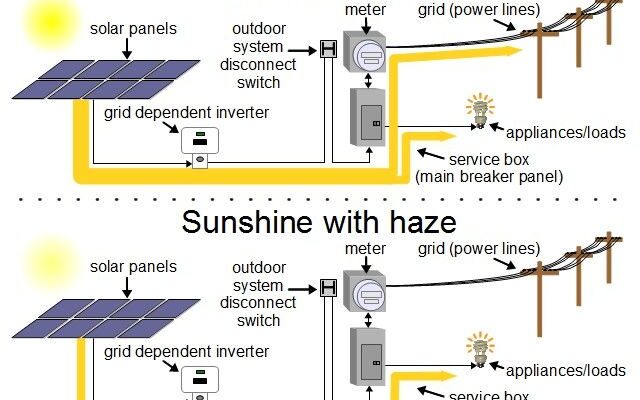Introduction:
The deployment of solar arrays in commercial environments has gained significant traction due to their environmental and economic benefits. There are some common misconceptions regarding the concepts of net metering, the role of solar arrays during power outages, and the use of battery systems to maintain business operations. This article aims to help clarify these topics, providing an overview of net metering and utilizing battery systems for backup power.
Net Metering:
Net metering happens when the power coming from the solar array is routed behind the meter and directly into the main distribution panel. If a solar array produces more electricity than required, that surplus energy is sent back to the grid which “spins” the electricity meter backward. The business then receives credit for the excess electricity, which can be used to offset their future electricity consumption.
Grid Dependency and Solar Arrays:
Being grid-tied is part of a net metering array’s design. During power outages, these grid-tied solar arrays shut down automatically for safety reasons. In fact, the array must sense power from the grid for the array to turn back on after an outage – known as anti-islanding protection. It would be dangerous to the utility workers attempting repairs if a grid-tied solar array continued producing electricity and pushed any excess power back to the grid.
Battery Systems for Backup Power:
To ensure uninterrupted business operations during power outages, a battery storage system can be integrated with a solar array. Systems using batteries require special inverters that prevent islanding & pushing of excess electricity to the grid when the power goes out. It is important to decide on incorporating a battery storage system early in the solar array design process, as it drives the overall design of the solar energy system.
When the grid is functioning correctly, excess solar-generated electricity charges the battery system and, once it is full, that energy flows back out to the grid. This stored energy can then be utilized in several different ways.
- As Backup Power: Businesses can continue to operate critical equipment and maintain essential services even when the grid is down. This ensures minimal disruption to operations and mitigates financial losses associated with power outages. The key is designating which circuits are protected by the battery backup when the system is built. Deciding on the battery system size and capacity is dictated by what it is protecting and how much power is consumed by those protected circuits.
- For Load Shifting: Battery systems allow businesses to shift their electricity usage patterns by storing solar energy generated during low-demand periods and utilizing it during peak-demand periods. This can help reduce electricity costs by avoiding high utility rates during peak hours.
- As a Demand Response Mechanism: Battery systems can also participate in demand response programs, where businesses reduce their electricity usage during times of high grid demand. By drawing power from the battery system instead of the grid during peak hours, businesses contribute to grid stability and may receive financial incentives.
In summary, solar arrays, combined with battery backup systems, can enhance a business’s energy resilience, reduce their reliance on the grid, and take advantage of cost-saving opportunities such as load shifting and participation in demand response programs. The combination of solar arrays, net metering, and battery systems represents a powerful solution for commercial entities aiming to achieve sustainable energy practices and improved resiliency in the event of a power outage.


